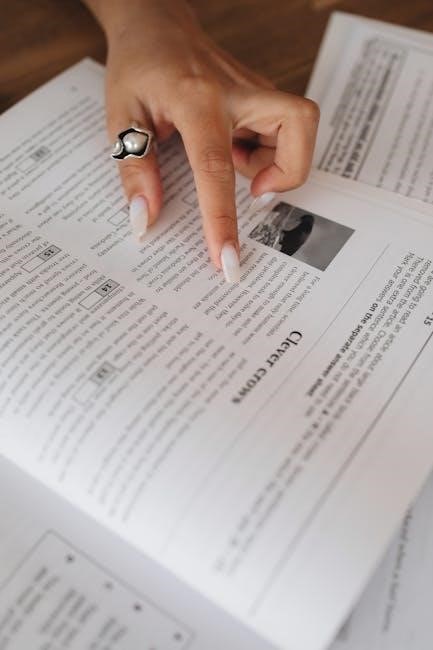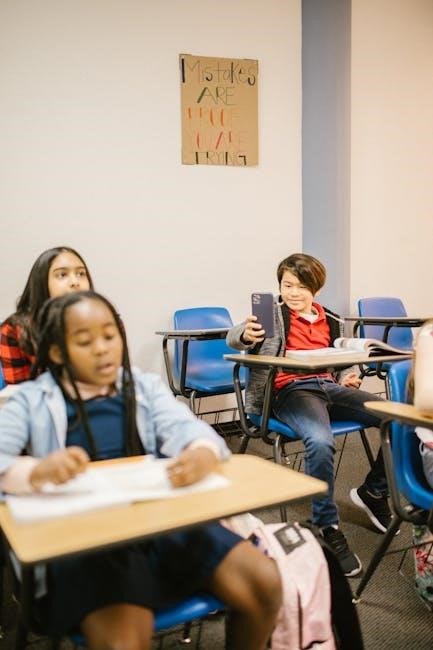
guided reading lesson objectives
Guided reading lessons hinge on a literacy objective. These objectives guide instruction and focus learning. Objectives come from sources like anecdotal notes. Running records also provide valuable insights. Summative assessment data can inform objectives. Therefore, effective lessons always start with a clear objective.
Definition of Guided Reading
Guided reading is an instructional approach where teachers support small groups. Students independently read texts, fostering problem-solving and strategic reading. The goal is to develop independent reading strategies. Teachers coach, leading students toward independence. Guided reading establishes fundamental skills. It identifies weaknesses and strengthens specific skills, building fluency. The teacher differentiates teaching in small groups. It supports the reader, leading to independence. A central goal helps children learn how to use independent reading strategies successfully. Texts range from level A to Z. Children learn strategies to apply independently. Work focuses on processes integral to proficient reading. These are cross-checking print and meaning information. This is better than just learning a particular book’s word meanings. Some consider whole-class guided reading, but the objective remains the same; Maintain positive attitudes to reading and understanding of what they read.
Core Elements of Guided Reading
Guided reading involves several common elements across classrooms. These include a book introduction. Before reading, teachers provide instructions. The aim is to set the purpose for reading. Background knowledge or vocabulary is provided to understand the book. Next, the reading of a new text happens. Teachers listen and observe students as they read. Guided reading lessons are carefully structured. The goal is to help students develop strategies. The objective remains the same across different interpretations. Activities can vary, but these elements remain. Teachers should provide support and adequate coaching. Students are taught to use problem-solving techniques. The approach allows for differentiated teaching in small groups. The teacher differentiates teaching in small groups. Guided reading sessions are made up of parts. It includes a well-defined time frame that nurtures this process. A reproducible lesson plan form is useful. This allows for individual feedback. It is a powerful time of day. It guides you toward your objectives. During the lesson, students should be able to check their reading.
Importance of Literacy Objective
A literacy objective is essential for effective guided reading lessons. Objectives guide the teacher’s instruction and focus student learning. A well-defined objective helps students to become proficient readers. Objectives direct the selection of appropriate texts. It also helps in planning targeted activities. All effective guided reading lessons start with it. The importance of literacy objective is that it maintains positive attitudes to reading. The importance of literacy objective is that it builds fluency. The importance of literacy objective is that it establishes fundamental skills. The importance of literacy objective is that it strengthens specific skills. The importance of literacy objective is that it helps children use reading strategies. The importance of literacy objective is that it helps students learn how to read. The importance of literacy objective is that it supports individual student needs. Objectives ensure that students are working towards specific reading goals. Objectives help assess student progress. It provides a clear target for both teacher and student. The goal is to support the reader. It is a teaching of reading that allows differentiated teaching. With clear objectives, guided reading becomes more purposeful. It’s focused and impactful for all learners.

Sources of Guided Reading Lesson Objectives
Guided reading lesson objectives come from various sources. These sources help teachers tailor instruction. One primary source is anecdotal notes and running records. These records capture student behaviors at points of difficulty. They show specific areas where students need support. Summative assessment data is another key source for objectives. Assessment data reveals broader areas of need across the class. It highlights skills that require further development. Furthermore, knowledge of letter-sound correspondence is another key source for objectives. Student interactions during reading activities provide valuable insights. Pay attention to how students apply reading strategies independently. Observe how they cross-check print and meaning information. Pay attention to how they handle unfamiliar words. Identify any recurring patterns in student errors. Consider student performance on previous guided reading tasks. Consider any relevant IEP goals or accommodations. Consider curriculum standards and benchmarks. Remember that objectives should be measurable and observable. All objectives should be specific to the grade level. They should be specific to the students skill level. The main purpose of Guided Reading is to help children become independent. It is important to revisit stories as directed by an adult.
Decoding Objectives Examples
Decoding objectives focus on students’ ability to sound out words; For first grade, an example is applying letter-sound knowledge while reading aloud. Another example is naming all letters and stating their sounds. For fifth grade, an example is decoding grade-level vocabulary orally and silently. Another example is using syllabication rules to decode unknown words. Good objectives address each area individually. Appropriate objectives should be measurable in some way. One should be able to observe the behavior in a student. Furthermore, an objective should be specific to the grade/skill level of the student. An example might be: “The student will accurately decode words with consonant blends.” Another example: “The student will decode words with vowel digraphs.” A third example: “The student will decode words with silent letters.” A fourth example: “The student will decode words with r-controlled vowels.” Remember to tailor decoding objectives to student needs. Consider their current decoding skills and their goals. Monitor progress regularly to ensure objectives are met. Make sure students are able to do it orally and silently. Make sure the objectives are at the grade level. Decoding is a critical skill for academic success.
Fluency Objectives Examples
Fluency objectives target students’ reading speed and accuracy. For first grade, an example is reading aloud with increasing fluency and accuracy. For fifth grade, an example is demonstrating fluency with expression and punctuation. Fluency includes rate, accuracy, and prosody. Objectives should be measurable and specific to the student’s level. Aim to improve reading speed while maintaining comprehension. An example objective is: “The student will read grade-level text at X words per minute.” Another example: “The student will read aloud with appropriate intonation.” A third example: “The student will demonstrate accurate word recognition.” A fourth example: “The student will self-correct errors while reading.” Consider using repeated readings to improve fluency. Encourage students to practice reading aloud regularly. Provide feedback on their rate, accuracy, and expression. Model fluent reading to demonstrate appropriate prosody. Use timers to track reading speed and set goals. Make sure the student is showing expression and punctuation. Make sure the student is reading the text correctly. Good fluency helps to increase comprehension. Fluency is very important for reading success. Fluency helps students to read the text without struggling.

Comprehension Objectives Examples
Comprehension objectives focus on understanding the meaning of the text. For first grade, students might answer questions or make predictions. For fifth grade, they could identify plot, setting, and theme. Objectives should be measurable and grade-level specific. One example: “The student will answer comprehension questions about the text.” Another: “The student will summarize the main idea of a paragraph.” “The student will identify the characters, setting, and plot.” “The student will make inferences based on textual evidence.” “The student will explain the author’s purpose in writing the text.” “The student will compare and contrast two characters in the story.” “The student will identify the problem and solution in the story.” “The student will describe the theme of the story.” “The student will support their answers with evidence from the text.” Focus on both literal and inferential comprehension. Use graphic organizers to aid understanding. Encourage students to ask questions about the text. Model strategies for making connections and visualizing. Teach students how to monitor their comprehension. Have students retell the story in their own words. Promote active reading strategies like highlighting and note-taking. Comprehension is a critical skill for academic success. Comprehension allows students to understand the text and the meaning.
Reading Strategy Objectives
Reading strategy objectives aim to equip students with tools for independent comprehension. These strategies can be applied across various texts. Examples include teaching students to make predictions. Another strategy involves summarizing main ideas. Encouraging students to ask clarifying questions is crucial. Visualizing the text is also a powerful tool. Students should learn to monitor their own comprehension. Connecting the text to personal experiences enhances understanding. Identifying key details supports comprehension. Inferencing skills should be explicitly taught. Students need to learn how to analyze text structure. Recognizing cause and effect relationships is important. Understanding the author’s purpose is also key. Teaching students to evaluate sources is essential. Promoting critical thinking skills is paramount. Students should be able to synthesize information from multiple sources. Encourage the use of graphic organizers to aid understanding. Model effective reading strategies during instruction. Provide opportunities for students to practice these strategies. Offer feedback on their strategy use. Help students understand when and how to apply different strategies. Foster a classroom culture that values strategic reading. Integrate strategy instruction into all reading activities. Reading strategy objectives empower students to become active, independent learners.

SMART Goals for Reading
SMART goals provide a framework for effective reading instruction. “SMART” stands for Specific, Measurable, Achievable, Relevant, and Time-bound. Specific goals clearly define what students should accomplish. For example, increasing reading fluency is a specific goal. Measurable goals allow teachers to track student progress. This could involve tracking words read per minute. Achievable goals are realistic and attainable for students. Setting achievable goals boosts student confidence. Relevant goals align with curriculum standards and student needs. The goals should be meaningful and purposeful. Time-bound goals have a defined timeframe for completion. This creates a sense of urgency and focus; An example of a SMART goal is: “Students will increase reading fluency by per minute by the end of the semester.” Regular monitoring and feedback are essential. This helps students stay on track towards their goals. SMART goals promote student ownership of learning. Encourage students to participate in goal setting; Celebrate student successes along the way. SMART goals for reading empower students to achieve their full potential. They also ensure that instruction is targeted and effective.

Role of Anecdotal Notes and Running Records
Anecdotal notes and running records play a crucial role in guided reading. They provide valuable insights into student reading behaviors. Anecdotal notes are brief observations of student performance. They capture specific strengths and areas for improvement. These notes inform instructional decisions and lesson objectives. Running records offer a detailed analysis of oral reading. They document errors, self-corrections, and reading strategies. Teachers use running records to assess reading accuracy and fluency. They also identify patterns in student reading behaviors. This information helps teachers tailor guided reading lessons. For instance, if a student struggles with decoding, the objective may focus on phonics skills. If a student lacks comprehension, the objective may target comprehension strategies. Anecdotal notes and running records are essential for differentiation. They allow teachers to meet individual student needs. These assessments inform grouping decisions and text selection. Regularly collecting and analyzing data ensures effective instruction. This also allows teachers to monitor student progress over time. Ultimately, anecdotal notes and running records enhance guided reading effectiveness. They enable teachers to make data-driven decisions and support student growth.
Adapting Objectives Based on Student Needs
Adapting objectives based on student needs is paramount in guided reading. Flexibility ensures that instruction meets students where they are. Regularly assess student progress using various methods. Anecdotal notes and running records offer valuable insights. Observation during guided reading provides real-time data. Use assessment data to identify specific learning needs. Adjust objectives to address areas of difficulty. If students struggle with decoding, focus on phonics skills. If comprehension is weak, target comprehension strategies. Differentiate instruction to meet diverse needs within the group. Provide varied levels of support and challenge. Modify text complexity to match student reading levels. Offer alternative activities to reinforce skills. Consider individual learning styles and preferences. Some students benefit from visual aids, while others learn best through hands-on activities. Foster a supportive learning environment where students feel comfortable taking risks. Encourage self-reflection and goal setting. Involve students in the objective-setting process. This promotes ownership and motivation. Communicate objectives clearly and regularly. Ensure that students understand what they are expected to learn. Continuously monitor student progress and adjust objectives as needed. Adapting objectives ensures that all students experience success and growth in guided reading.